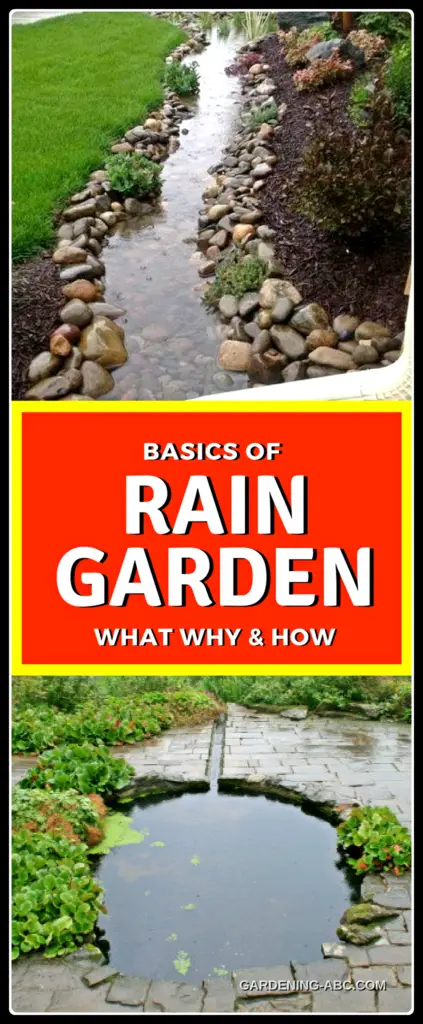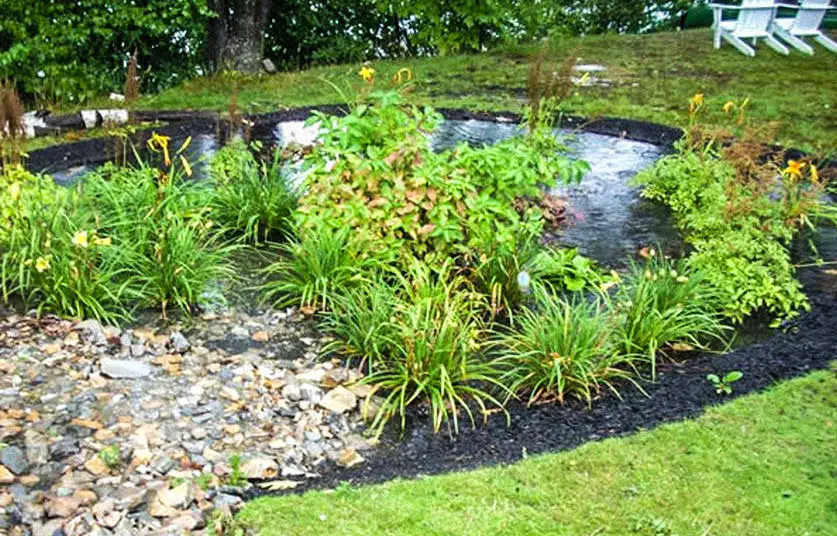We use affiliate links to run our site. When you buy through links on our site, we may earn an affiliate commission, without any added cost to you. Learn more
The rain garden is an interesting concept. This concept is also a great example of self-watering gardening. Rain gardening not only increases your gardening beauty but also helps in water preservation.
Here in this article, I want to give you a brief idea about what is a rain garden, how it works, and how to make a rain garden in your backyard.
What Is A Rain Garden?
Rain garden refers to a garden which takes advantage of the water from the rainfall in growing plants and uses a water system. This is different from gardening in the rain.
The rain garden is designed to withstand a great level of moisture and concentration of nutrients. It allowed the run-off water to slow down as it goes downhill and thus reduces its erosive power.

Rain garden looks as like any other garden from outside but the specialty lies in the fact that it gets its water from the runoff and what happens after the water enters the garden.
The rain garden is a shallow depression in your backyard with absorbent yet free-draining soil and it is planted with vegetation.
It acts as a personal water quality system as it filters the wastewater from the roof and other hard surfaces and recharges it.
Why Should I Build A Rain Garden?
- The main purpose of building a rain garden is to receive the runoff water from hard surfaces like the roof, sidewalk, etc.
- By having a garden like this you will do your little bit to preserve this invaluable natural resource called water.
- It increases the scenic beauty of the garden and protect streams and lakes nearby from pollutants and also help reducing flood.
- It holds water for quite some time and thus provides a natural habitat for Birds, Butterflies, and many other beneficial insects.
- It also helps in reducing your water needs by recycling the wastewater. So you would have lesser municipality water needs.
How To Build A Rain Garden?
Building a rain garden is very easy and is not at all expensive.
The first thing to do is to choose a spot to prepare the garden. It can be near the house if you only want to collect roof runoff or can be a little further in case you also want to collect lawn water.
Just keep this in mind that it should not be near a big tree or very near to the foundation of the house or it can damage them.
Next, you need to find the things that will drain the water to your rain garden. The larger the better. More area means more water will come into the garden.
How Big A Rain Garden Should Be?
The ideal size of a rain garden can be from 100 sq ft to 250 sq ft depending on the total area. Also, don’t make the garden too deep. the ideal depth should not be more than 6 to 8 inches.
To make sure that the water doesn’t go downhill from the garden, it is necessary to protect the garden with some kind of a wall. A low wall or berm is perfect for this purpose.
Dig a couple of inches more than the actual size of the garden to create the space for this purpose. Add 2-inch thick compost for the nourishment of the plants.
Growing Plants in The Rain Garden:
Now comes the most interesting part: PLANTING. For this, first, make a rough plan of the actual garden in terms of the plants you want to grow and their positions in the garden.
Choose the plants carefully considering their height, flowering time, and composite texture of the garden. Choosing different blooming times will ensure a longer flowering season for the garden.
Use one or two years old plants, with the well-established root system. Until the rain starts you need to give them much needed water for their survival. Use native plants to reduce cost and increase the chances of survival.
I hope you got some useful information from this post. If you are really thinking about installing or maintaining a rain garden, this book by Lynn M. Steiner can be a real treasure. There is a wealth of information on this subject.
Like the post? Don’t forget to PIN IT

Amazon and the Amazon logo are trademarks of Amazon.com, Inc, or its affiliates.
